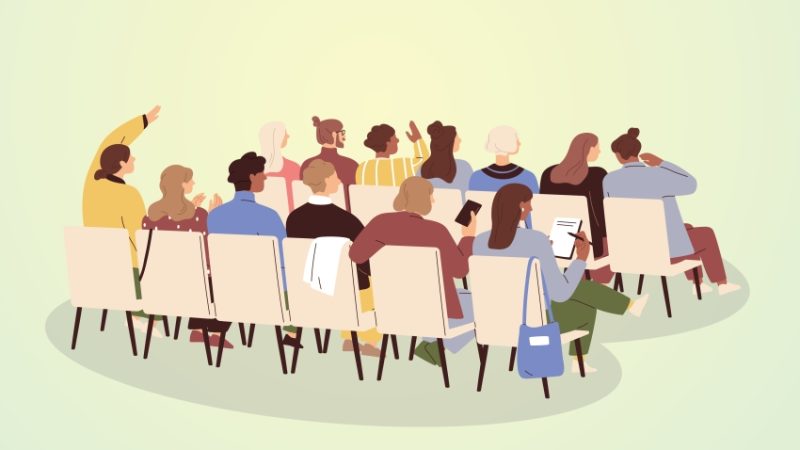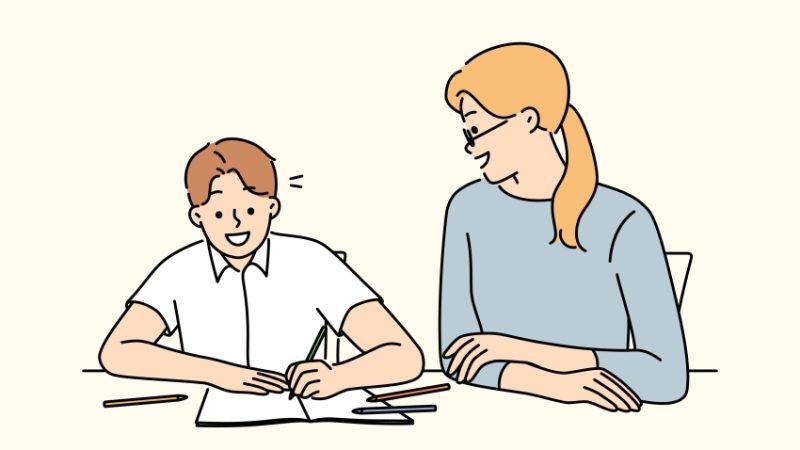Experiential education – What it is, and how it can help your students

Supervising practical activities can involve navigating an array of challenges and complicating factors – so if you want to succeed, approach the task strategically…

Most educators believe that their participants’ learning can be deeply ingrained by giving them experiences.
Whether you’re looking to share knowledge, teach skills or develop behaviours, there is plenty of evidence to suggest that the act of ‘doing’ something will help – what’s commonly described as experiential learning.
Experiential education is a craft that combines art and science. It takes practice and experience to develop, and often involves trial and error. There are few hard and fast rules, and it requires sound judgement in order to be effective.
Within vocational subjects, a craftsperson will start their journey with an apprenticeship that will see them build experience and learn the basics. They will then qualify to operate in their own right, before eventually building enough skills and experience to be considered a master. The journey to becoming a master experiential educator is broadly similar, but with less defined boundaries, and involves the following four hierarchical steps:
1. Early days
Before they even know the term ‘experiential learning’, the approach of most educators will be to provide open experiences with few goals or agendas, and trust that the act of ‘doing’ will provide learning for the participants.
The classic example of this is ‘play time’, where young students head out into the playground to invent games, roleplay and have a good time with their friends. No educational goals are set, but they will inevitably learn social skills such as negotiation and problem solving, and exercise their imaginations creatively.
The benefits of this approach are that it’s participant-led and highly engaging, requiring little planning and often delivering unexpected, yet valuable insights to participants. The drawbacks are that you have little control over outcomes, and that participants can become disengaged from formal learning.
2. Refining the process
Next, we need to consider of how certain activities naturally support certain forms of learning. The educator sets the desired learning outcomes, then chooses those activities they feel will maximise the chance of attaining said outcomes.
Boosting the resilience of an army unit, for example, may entail taking them to a tough environment where they’re challenged, and expected to develop the mental tools needed to deal with said challenges.
For a more corporate example, we could look to the ‘team-building’ paintballing trip, often prompted by the belief that in order to succeed, staff must acquire key teamworking skills.
This more targeted approach allows for some steering of the learning towards a predetermined goal, but brings with it the possibility that participants can ‘fail’ in their learning by not reaching those desired outcomes. At this level, educators require a good understanding of both the expected learning and the activity in advance to ensure that they’re well matched.
3. Basic facilitation
As experiential educators progress beyond the basics, the facilitation of learning experiences becomes more common. This is where teachers start assembling a toolbox of techniques, while simultaneously considering not just a lesson’s learning goals and activities, but how they’ll be set up and run, and the language they’ll use.
They’ll often use tools such as framing – where participants are told the purpose of an experience before they have it – reflection and review, where participants collectively explore and dissect the experience afterwards.
4. Strategic facilitation
Great experiential educators will eventually develop a wide range of tools and techniques, become more strategic in their approach and move beyond frame-do-review.
Your strategy, and the tools used to carry it out, will affect how the activity feels to participants and strongly influence the learning they draw from it. You’ll have to start making decisions over how involved you want to be in the learning experience, and how to balance levels of challenge and support.
You may, for example, choose to let students attempt a challenging activity with minimal input from you. Knowing it would be helpful for morale if they were to succeed, you provide the minimum amount of support they’ll need at key moments to allow success – a metaphorical ‘leg up’ – allowing them to achieve more than what would have been possible through their efforts alone.
Allowing for chaos
Depending on the activity you’re running and the learning environment, you must also decide how much ‘chaos’ you’re willing to allow, and thus how much freedom your group will have to operate.
If you allow a maximum level of chaos, participants will have complete freedom to operate as they wish during the activity (‘Play Time’). Conversely, ‘no chaos’ will require the session to be clearly managed from start to finish (‘Train Tracks’). Somewhere between the two lies a third strategy, whereby teachers are heavily involved helping the group formulate a plan, before then stepping back and letting them carry it out. We could call this the ‘Drag and Drop’ approach.
Having begun to think strategically about experiential education, you’ll soon see how, by applying different strategies to the same activities, the nature of the experience and the learning that participants come away with can be vastly different.
Choose your strategy
Key to maximising the effectiveness of activities is choosing the right strategy, but developing this skill requires experimentation. What worked for one group or activity last time isn’t guaranteed to work this time, and whether a strategy works at all can depend on many different factors.
First, you should obviously choose a strategy that matches the learning outcomes you want your participants to achieve. This is likely the first factor you’ll be thinking about, and particularly important if your learning outcomes aren’t directly related to the activity itself – such as a practical task intended to build confidence, for example.
Second, consider who the participants will be. A strategy that works for one group might not work for another, even if they’re superficially similar. The number of participants you’re working with will also strongly influence your choice of strategy, as will their age – though the latter relates more to maturity than calendar age. Some adult groups can demonstrate startlingly childish behaviour, especially when under stress!
Other factors affecting your choice of strategy may include levels of physical fitness, cultural background, gender, emotional state and prior experience. Also bear in mind that the emotional state of your participants can have a dramatic effect on how activities run, and as such, should guide the strategy you opt for. The changing emotional state of participants can be the primary reason for a previously successful strategy not succeeding as well with the same group a second time, even if the activity itself and other factors remain the same.
Factors affecting a group’s emotional state might include recent successes or failures, relationships between team members (and with you) and their previous experiences. A group’s emotional state will be highly dynamic, requiring skill and practice to assess. Your approach to choosing a strategy needs to be similarly dynamic in turn.
Everything in context
Finally, remember that learning activities don’t happen in a vacuum. Your choice of strategy may be affected by what happened before your activity, what’s happening afterwards or what happened last time your participants tried it. Even the time of day, how good lunch was, and how the weather is doing can be major factors in an activity’s success.
How well you understand the context will depend on how well you know your participants and the level of information you have, but it never hurts to talk to them and find out more. If your activity is taking place as part of a wider programme, the placing of your activity, the prior activities and what’s coming next will also impact your choices.
Above all, be conscious, thoughtful and strategic about how you run your learning activities. Your participants will not only be more likely to reach their learning outcomes, but also hopefully be more engaged, more thoughtful and ultimately care more about their learning.
Self-reflection
Choosing a strategy to help maximise your participants’ learning will always be more of an art than a science, but here are some questions you can ask yourself to help you make your choice:
• Is it important that my group ‘succeeds’ or completes the task at hand?
• Do I want my participants to be challenged, or allowed an ‘easy win’ to develop their confidence?
• Do I want my participants to have lots of freedom or limited freedom?
• How confident am I in my group’s ability to undertake this activity successfully?
• Do I think my group will need lots of help with this activity?
• What are the consequences of my group performing poorly on this activity?
• Are my participants ready for this activity?
• What have my participants been up to before they got to me? What are they up to next?
Sam Moore specialises in helping people develop themselves through challenge, having worked for two decades in adventure education and delivered personal development in corporate, educational and youth settings; Tim Hudson designs and delivers programmes aimed at helping people become the very best versions of themselves
Their book, Amplifying Activities for Great Experiential Learning, is available now (Routledge, £19.99)








